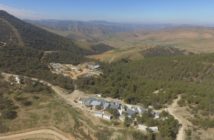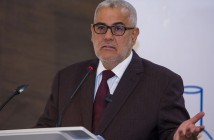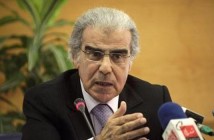DUBLIN–(BUSINESS WIRE)– Research and Markets
(http://www.researchandmarkets.com/research/dbbcbc/mena_renewable_ene) has announced the addition of the “Mena Renewable Energy 2012” report to their offering.This report provides a detailed analysis of the existing Renewable energy sector across the MENA region – offering data on existing capacity, demand growth and a forecast for additional capacity and investment up to 2020. Benefit from access to detailed insight into existing renewable energy capacity and planned projects, 2020 renewable energy targets of 14 Arab states, increasing renewable energy capacity to meet high power demand growth, regulatory and institutional framework to meet 2020 targets, capacity requirements for the Mena region and the effect on the renewable energy plans due to the civil unrest in 2011.Despite having considerable solar and wind potential, renewable energy makes a minimal contribution to power generation across most of the MENA region, and in particular in the GCC where traditionally low cost oil and gas production has stifled its development.However, according to the latest research report by MEED Insight, Mena Renewable Energy 2012‘, states right across the region are now planning a substantial hike in renewable energy capacity over the coming decade to meet high power demand growth, limit the use of oil and gas feedstock in power generation, and take advantage of a forecast drop in solar and wind generated electricity.Even though renewable energy is being taken much more seriously across MENA, the 2020 targets are highly ambitious, given the limited track record of most regional states. In parts of the region, much still needs to be done on clarifying, developing and improving the regulatory and institutional framework. Issues such as feed-in tariffs and grid access also need to be addressed. Finally, the removal of red-tape and slow-decision making is a prerequisite given that both have seriously hampered the development of new projects in the past in North Africa.Key Topics Covered:
- Preface Executive summary Introduction Technologies
- Morocco Historical context Policy Wind Solar Future solar projects Morocco key players
- Algeria Historical context Policy Solar Wind Geothermal Hydroelectricity Biomass Algeria key players
- Tunisia Historical context Policy Solar PV CSP Wind Hydroelectricity Geothermal Biomass Tunisia key players
- Libya Historical context Policy Wind Solar Libya key players
- Egypt Historical context Policy Solar Future solar projects Wind Hydropower Biomass and geotherm Egypt key players
- Jordan Historical context Policy Solar Wind Other renewable sources Jordan key players
- Syria Historical context Policy Wind Solar Syria key players
- Iraq Historical context Policy Solar Wind Hydropower Geothermal Iraq key players
- Bahrain Historical context Policy Wind Solar Biomass Bahrain key players
- Kuwait Historical context Policy Solar The ISCC project Rooftop solar projects Solar power study Kuwait key players
- Oman Historical context Policy Solar Wind Oman key players
- Qatar Historical context Policy Solar Wind Qatar key players
- Saudi Arabia Historical context Policy Solar Wind Saudi Arabia key players
- UAE Abu Dhabi Dubai Northern emirates UAE key players
For more information visithttp://www.researchandmarkets.com/research/dbbcbc/mena_renewable_ene
Research and Markets: Mena Renewable Energy 2012 – A comprehensive outlook and review of one of the world’s fastest-growing renewable energy markets
Share.







